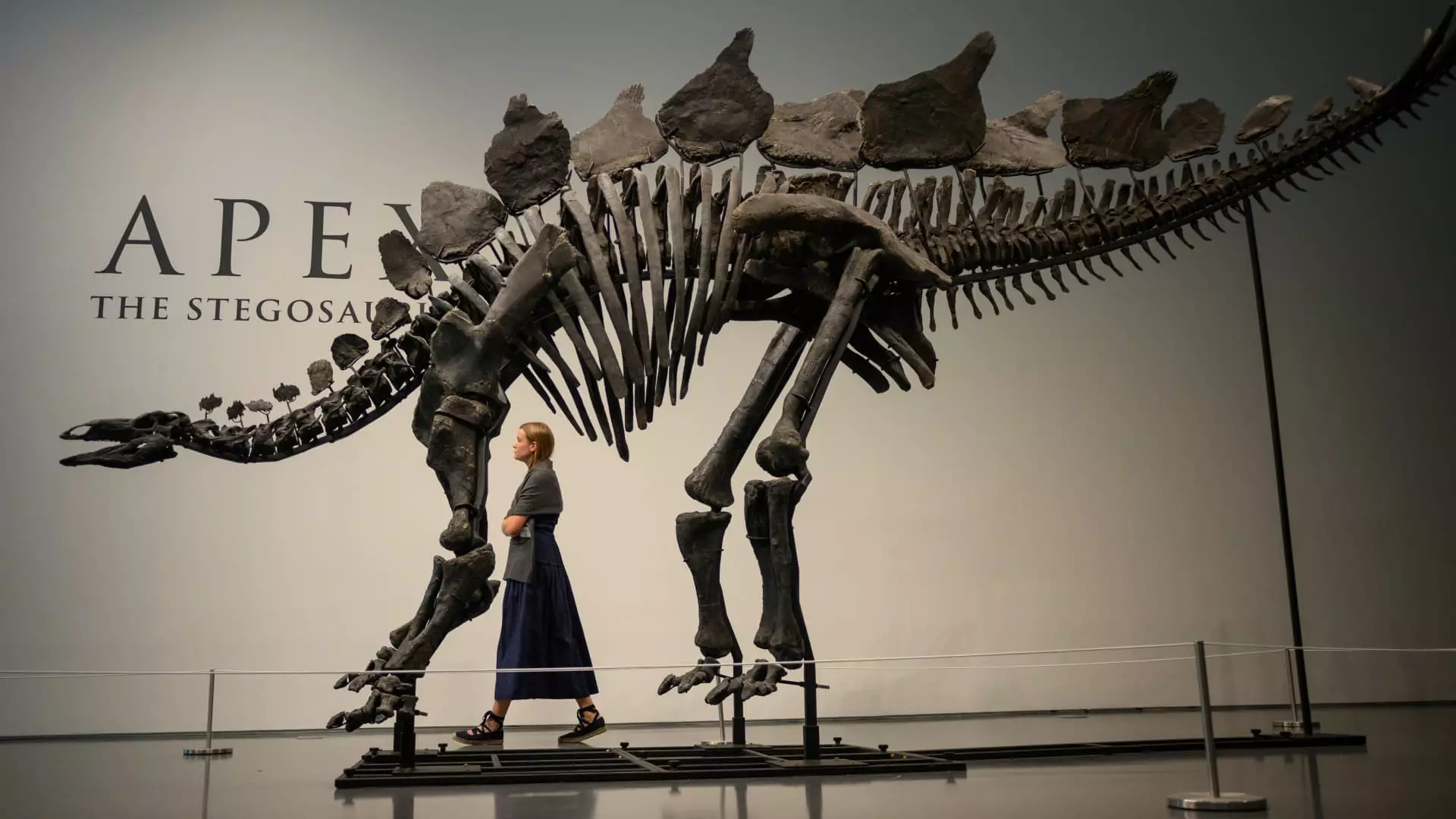In a surprising turn of events, billionaire investor Ken Griffin made headlines by purchasing a late Jurassic stegosaurus skeleton for a whopping $44.6 million at a Sotheby’s auction. This purchase marked the most valuable fossil ever sold at an auction, surpassing all expectations.
The stegosaurus, named “Apex,” is estimated to be around 150 million years old and stands at an impressive 11 feet tall. Measuring nearly 27 feet long from nose to tail, this nearly complete skeleton consists of 254 fossil bone elements. What was initially expected to sell for about $6 million ended up being a hotly contested item at the auction, with Griffin ultimately emerging as the victor after competing with six other bidders for 15 intense minutes.
Following his successful bid, Ken Griffin expressed his intention to explore the possibility of loaning the stegosaurus skeleton to a U.S. institution. This move reflects his desire to keep “Apex” within the borders of America, stating proudly, “Apex was born in America and is going to stay in America!” The dinosaur itself shows no signs of combat-related injuries or post-mortem scavenging, adding to its allure and historical value.
Ken Griffin’s purchase of the stegosaurus skeleton is not his first foray into the world of historical artifacts. In 2018, he generously donated $16.5 million to Chicago’s Field Museum to support the display of a cast of the largest dinosaur ever discovered, a giant herbivore from Argentina. Additionally, in 2021, Griffin made waves by outbidding a group of cryptocurrency investors to acquire a first-edition copy of the U.S. Constitution for $43.2 million. He subsequently loaned this significant document to the Crystal Bridges Museum of American Art in Arkansas.
Ken Griffin’s unexpected purchase of the stegosaurus skeleton “Apex” serves as a testament to his passion for history, fossils, and preserving valuable artifacts. Griffin’s keen interest in acquiring valuable items showcases his dedication to preserving and maintaining historical artifacts for future generations.

Leave a Reply